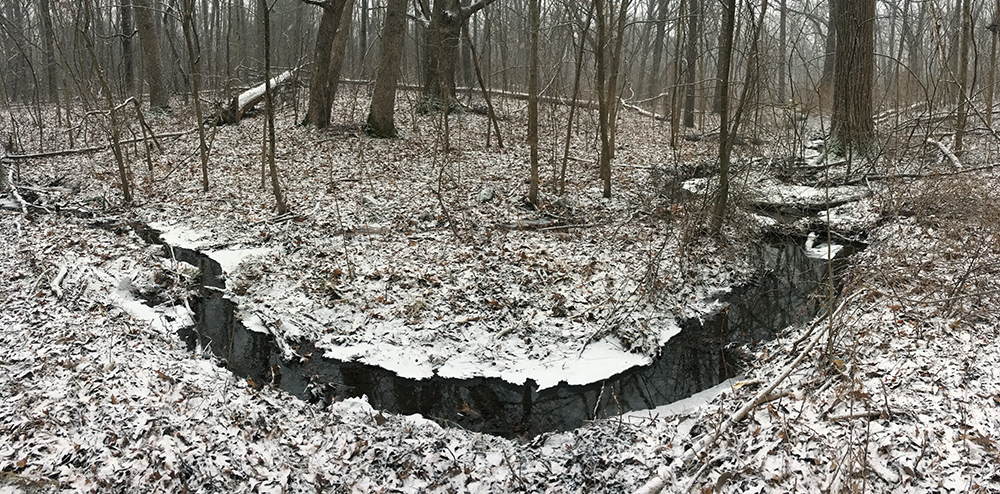
Searching for snow and serenity: Bristol County Park
January 16, 2019 | Topics: Spotlight, Stories
By Eddee Daniel
Do you remember, as I do, the Januarys when the temps never rose above freezing? When the snow cover remained deep and solid for an entire month? You could ski or snowshoe almost anywhere in one of the many nearby parks and preserves. Not so this year. Not here. Like so many days here in Southeastern Wisconsin this winter, this one starts out unseasonably snowless. Call it climate change or not, I find it dispiriting.
So, I load my camera equipment in the car and head south.
Am I the only one who thinks it odd that you would go south in order to find snow? Kentucky, Tennessee and Missouri have all gotten more snow than we have this season. Incongruous as it seems, today there is snow in the forecast, not for Milwaukee County, but for Illinois and—maybe—along the border in Kenosha County. Although I am a staunch weather forecast skeptic, I’ve been deprived long enough to take a chance on Kenosha.
My first stop is Richard Bong State Recreation Area. A session on “dog-powered sports” is going on as planned despite the absent snow. The presenter gamely shows off skis and a dog sled inside before leading the large group out to meet the dogs—in the dry and completely snow-free parking lot. The sled remains indoors.
Several other events at State Parks and Forests that had been planned for this Saturday in mid-January have been cancelled due to the conditions. Thoreau, the fabled chronicler of seasons, liked to complain that his fellow citizens “have not learned the phases of Nature; they do not know what constitutes a year, or that one year is like another.” How would Thoreau react, I wonder, to this fickle and untrustworthy season? And if we cannot plan for winter, for what kind of spring can we hope?
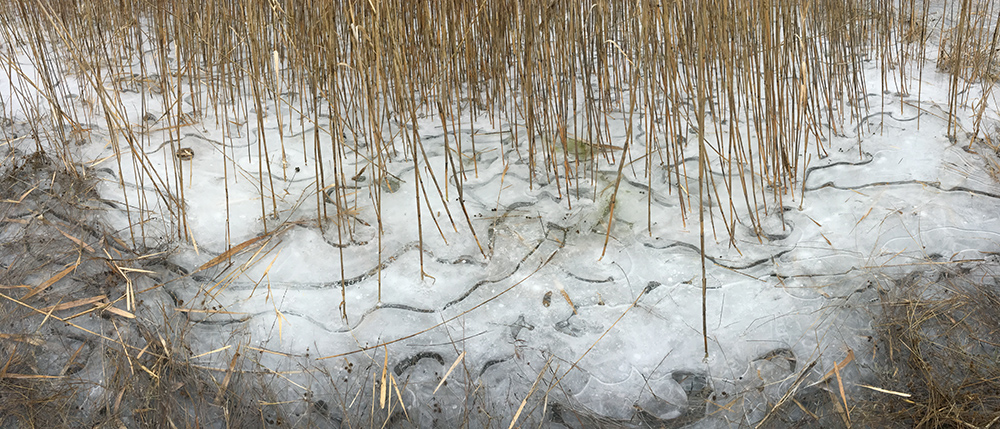
I wander off to see what I can find. A skirt of ice encircles each pond and wetland. But not a speck of snow. In the distance I spy a troop of blaze-orange-coated people with more dogs pressing their way through tall, unbent brown grasses. At the Visitor’s Center I learn that they are hunters training their dogs, but I would need a permit to go out to see (and photograph) them. I settle for a couple photos of the somber landscape and move on.

Silver Lake County Park is due south of Bong. I first visited there a month ago. I had a lovely hike (you can see those photos on the new park page on our “Find a Park” map), but on that Monday I saw no one else. I am hopeful that today, being Saturday, there will be a host of bikers taking advantage of the highly developed system of mountain bike trails.
Have you ever tried to walk on a mountain bike trail? First, don’t try it when it is busy with bikers. The trails are often narrow. I wait awhile on the hiking path that runs between two mountain bike trails, which I can clearly see through the leafless trees. When no one shows up in either direction, I decide to strike out down one of them and test my luck. Mountain bike trails are not designed for walking. They twist and loop in ways that are intended to increase the challenge on wheels but make no sense on foot.

After half an hour of silence and solitude I walk back to my car. The only sign of life is a downy woodpecker that pauses briefly in the dreary underbrush; then shoots away again to forage for dormant insects.
My final stop is Bristol Woods County Park, which is home to the Pringle Nature Center, one of our project partners. As I pull up and park, there is a deepening, expectant gloom in the overcast sky, but still no falling snow. I walk into the mid-day dusk of the forest. The dry leaves on the trail, crushed and frozen, are noiseless as I walk over them. The stillness and silence that has settled here is made only more palpable by a faint, high-pitched mechanical bleep coming at irregular intervals from somewhere out of sight.

Almost immediately, I come upon a rude construction of sticks propped against a fallen limb. It conjures memories of youthful escapades, and yet I hesitate to call it a “fort” or even “shelter,” so tentative and widely spaced are its upright sticks. How inescapable is the human drive to shape and tame our surroundings?
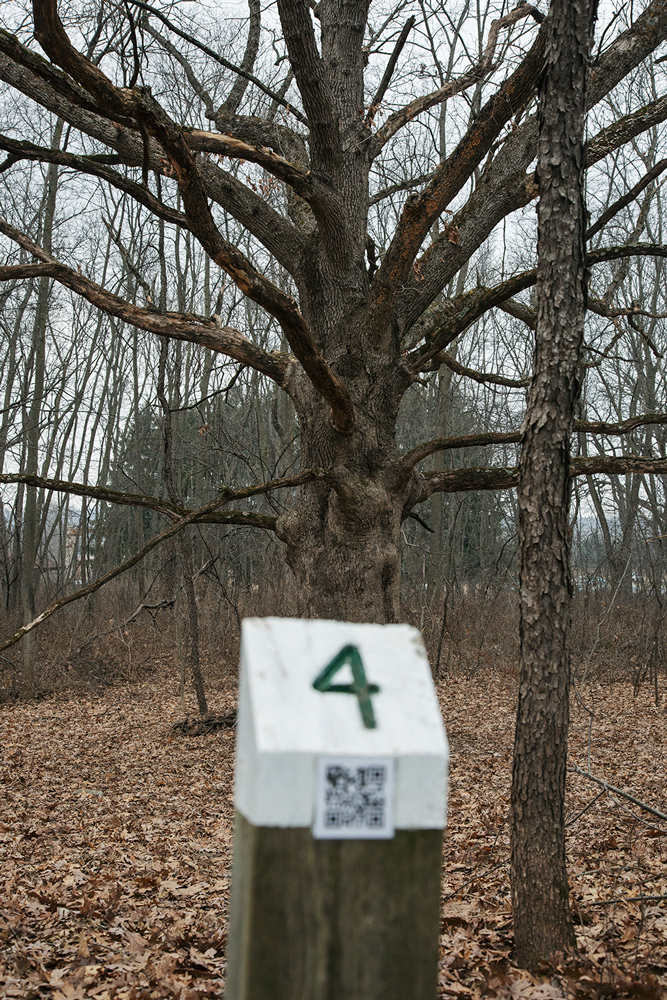
Here and there, giants rise from the understory to throw long arms wide and loom overhead. These white oaks remind us of the historical savanna that existed here in a time when fire kept smaller trees and shrubs from choking the grasslands. A self-guided tour provided by the Nature Center aides in this reminiscence for anyone, like me, who needs it. A stick fort is a small gesture indeed when measured against the terraforming effect that the suppression of fire has had on our grasslands, savannas and forests.
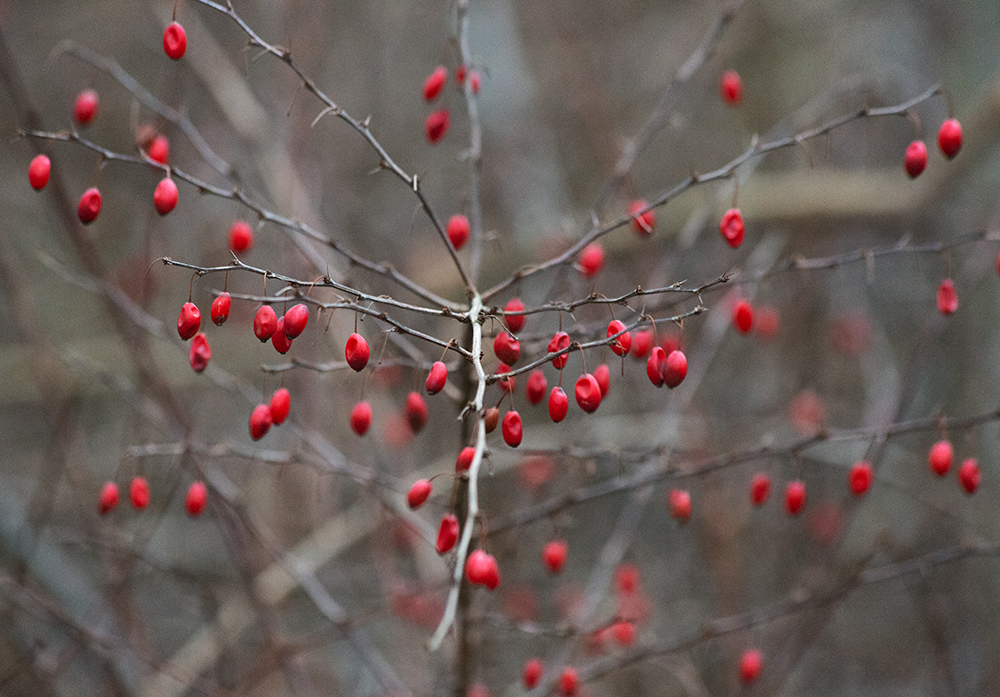
There is some solace, for a winter-starved nature-lover as well as over-wintering birds, in the red berries that brighten the otherwise lusterless scene. My ignorance of the species of berry is condoned, surprisingly, by Thoreau, who asserts “You must not know too much or be too precise or scientific about birds and trees and flowers….” A measure of vagueness, he adds, and “credulity helps your enjoyment of these things.”

Finally, it begins. A few gentle flakes at first. Before long, however, the beguiling dance steadies and intensifies. The forest is slowly transformed. It feels more sheltering. The silence itself seems muffled, calm.

The mute giants, now stark and limned with snow, become magnificently grotesque. A few minutes more and they soften and melt almost imperceptibly into their surroundings. The snow-blanketed landscape has a grace and serenity that is harder to experience in other seasons.
This is why I have come.
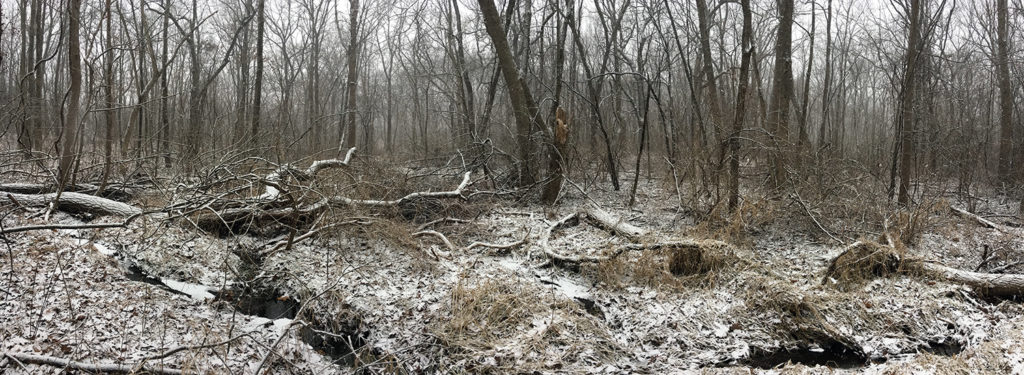
Stepping off the path, even for a moment, propels me into a wilderness several generations removed from my comfortable life. Who today is willing to take that step? I, for one, revel in it. Pushing aside snow-frosted brush, I make my way to a frozen pond and indulge in the simple pleasure of sliding across the ice, filled with youthful joy.
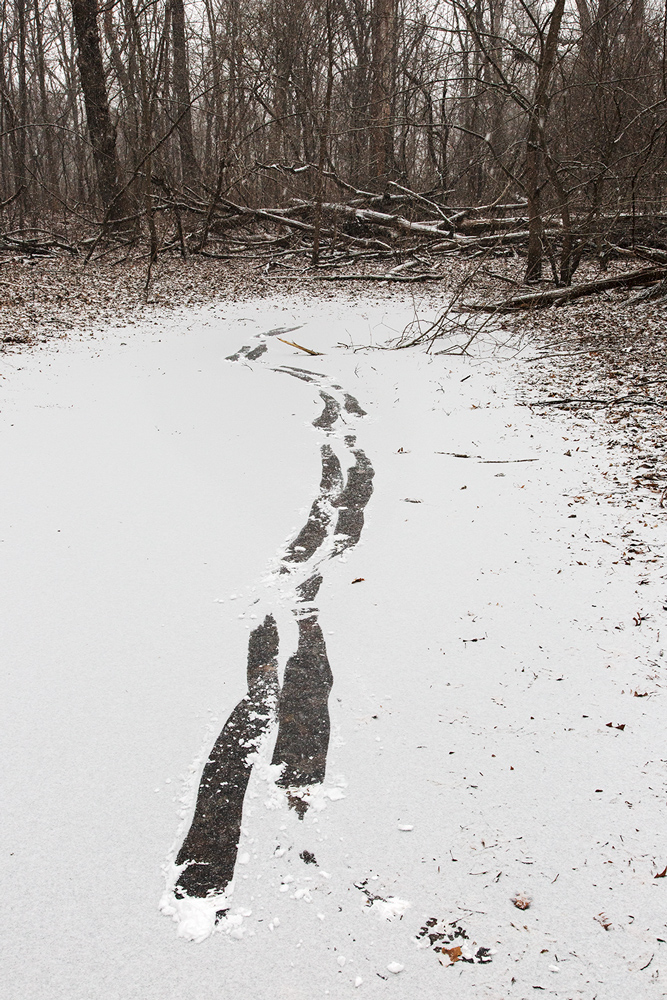
Once is enough though, I realize, as the heart-warming effort sets my heart racing—and blood pressure rising!
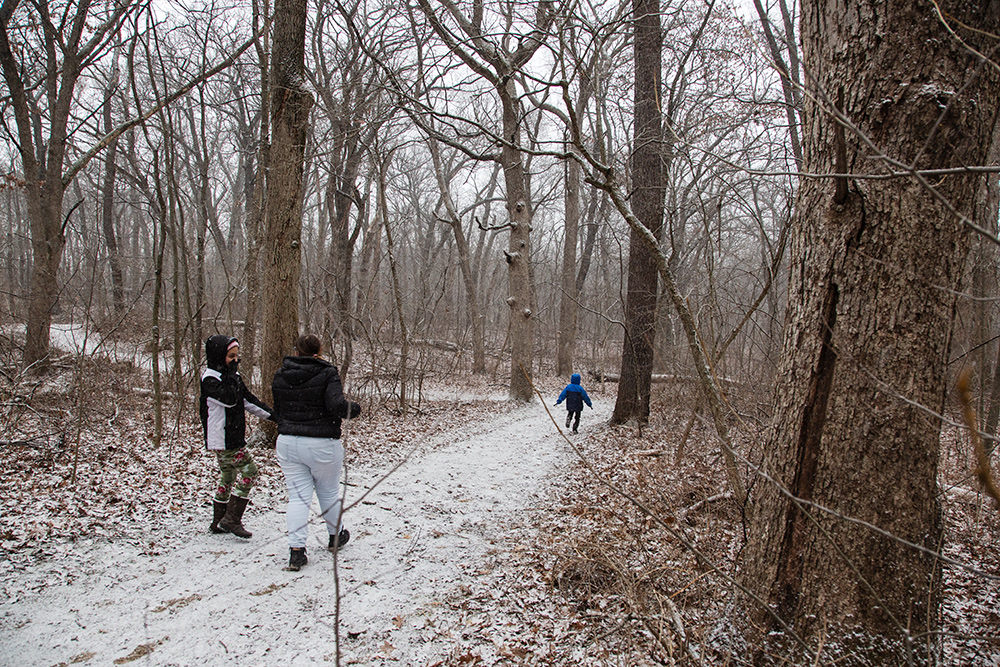
Just as I begin to believe I’ll never see another person in Bristol Woods, the silence is broken, wondrously, by children’s excited shrieks. A boy and two girls rush by, chattering with delight, followed more slowly by a man I presume to be their father, who is tethered to a small white dog. After they pass, I overhear the man admonishing one of the children for pulling out a cellphone, threatening to confiscate it. “There will be time enough for that later,” he says. “Not here in the woods.” I hear no back talk and then I hear diminishing shrieks as they all disappear into swirling snow.
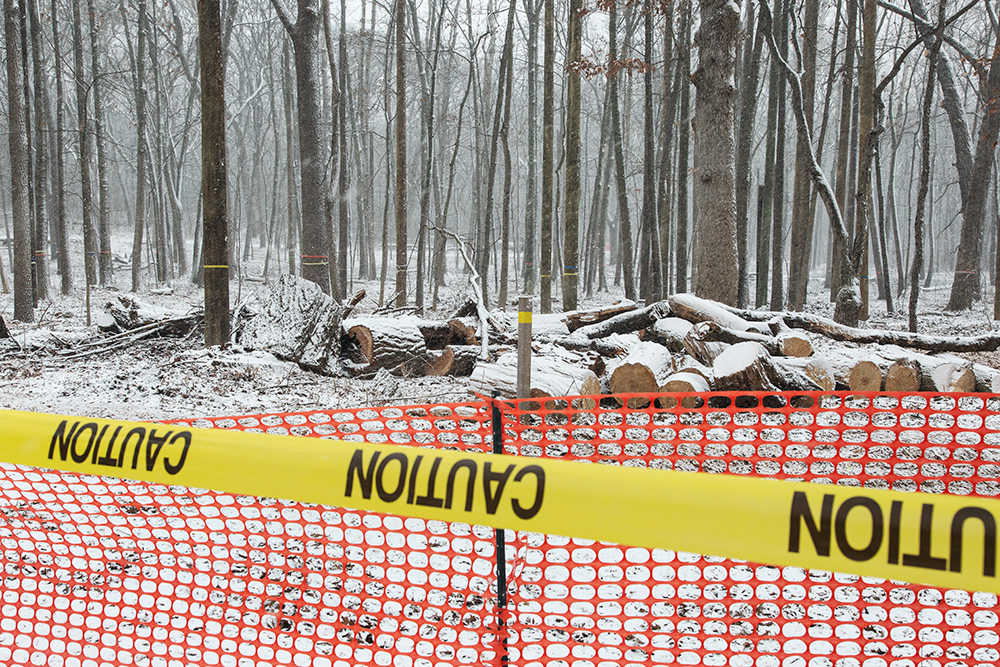
I’ve made my way about half way around the 200-acre wood when I am stopped by a construction fence blocking the way forward. Beyond it a large swath of the woodland has been cleared of underbrush, along with a substantial number of trees. Unnaturally smooth poles have replaced some of them in precisely vertical alignments. The mechanical bleeping has returned, louder now, and I can see its source through the thickening snowfall: a small Bobcat front-end loader.
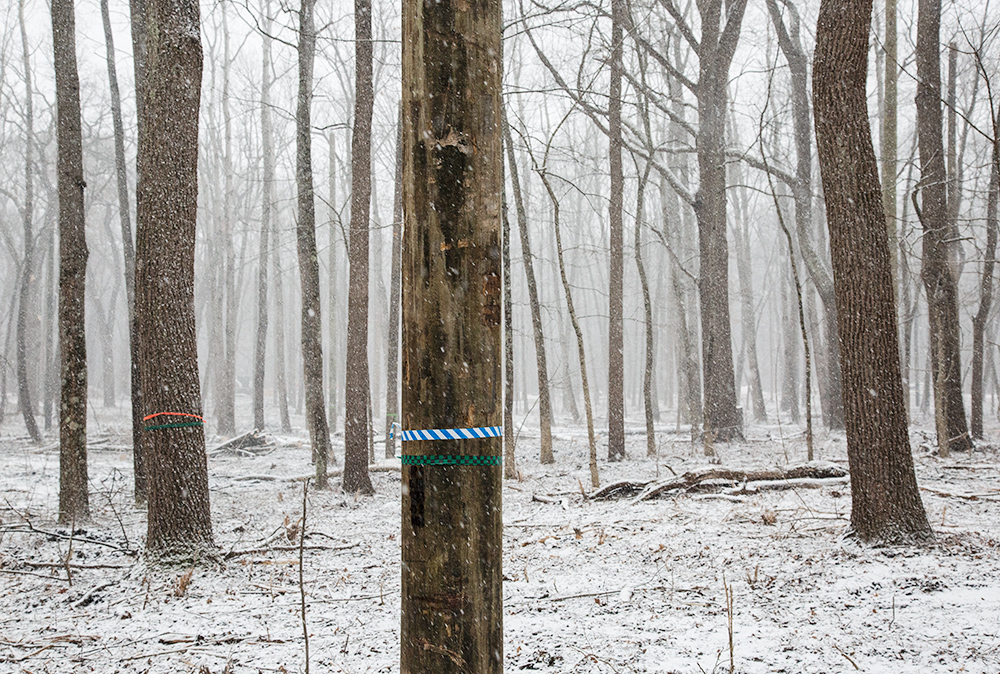
Backing up, the Bobcat bleeps repeatedly. Then it pushes its shovel into a snow-covered mound and lifts, revealing a steaming pile of wood chips. The Bobcat trundles off to deposit its load on a newly developed trail. Falling snow erases the line of its tracks as it recedes. I ask one of the workers what’s happening and learn that Boundless Adventures, a private company, has partnered with Kenosha County to install a ropes course, which will be billed as an “aerial adventure park.” How inescapable is the drive to tame—and monetize—our adventures?
Forced by the barrier and work site to backtrack, I happily retrace my steps, which—like the Bobcat tracks—have vanished under the falling snow. Under the sheltering canopy, peaceful silence resumes. To the builders of Aerial Adventure Park, I may seem hopelessly old-fashioned, if not simply old, but I count any time spent in a beautiful forest—or a meadow or wetland—as an adventure. How often, I wonder, in our haste for excitement, will we miss the everyday miracles—winter berries and downy woodpeckers and giants of the forest—that nature itself provides to anyone willing to slow down and notice?
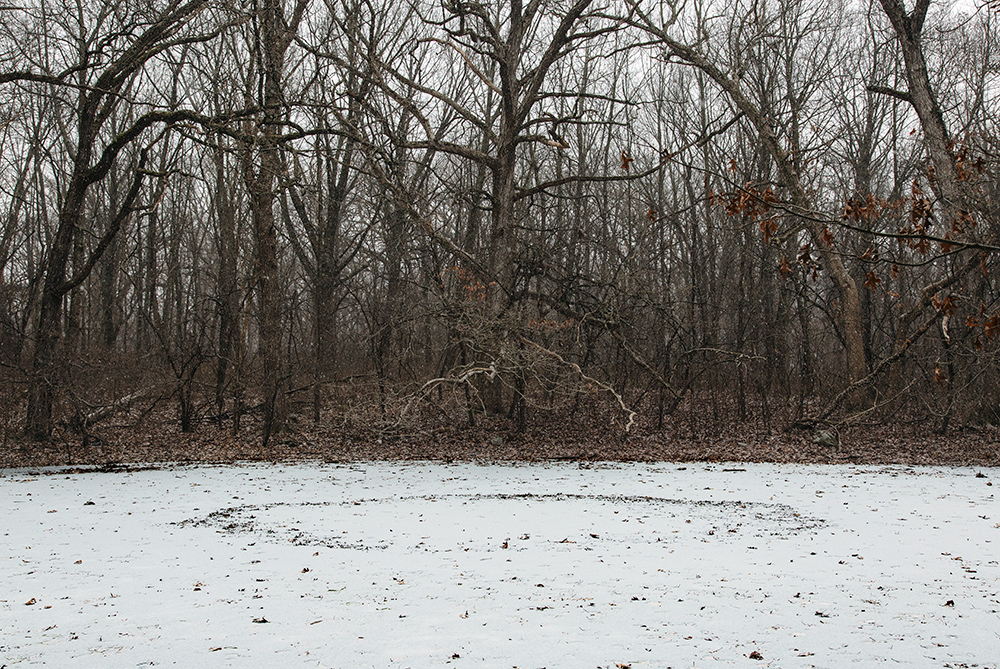
Making my way back around to the parking lot, I once again pass the simple stick fort I’d encountered at the beginning. It suddenly seems particularly scrawny and unsophisticated—and far more attractive than on my first impression. I remember spending countless hours as a child in the woods by a creek, often making similarly crude structures with industry and diligence. Each time I found it vandalized, the sticks strewn carelessly about, was a relished opportunity to renew the adventure.
Has Thoreau become old-fashioned, too? He proclaims, “This curious world which we inhabit is more wonderful than it is convenient; more beautiful than it is useful; it is more to be admired and enjoyed than used.”
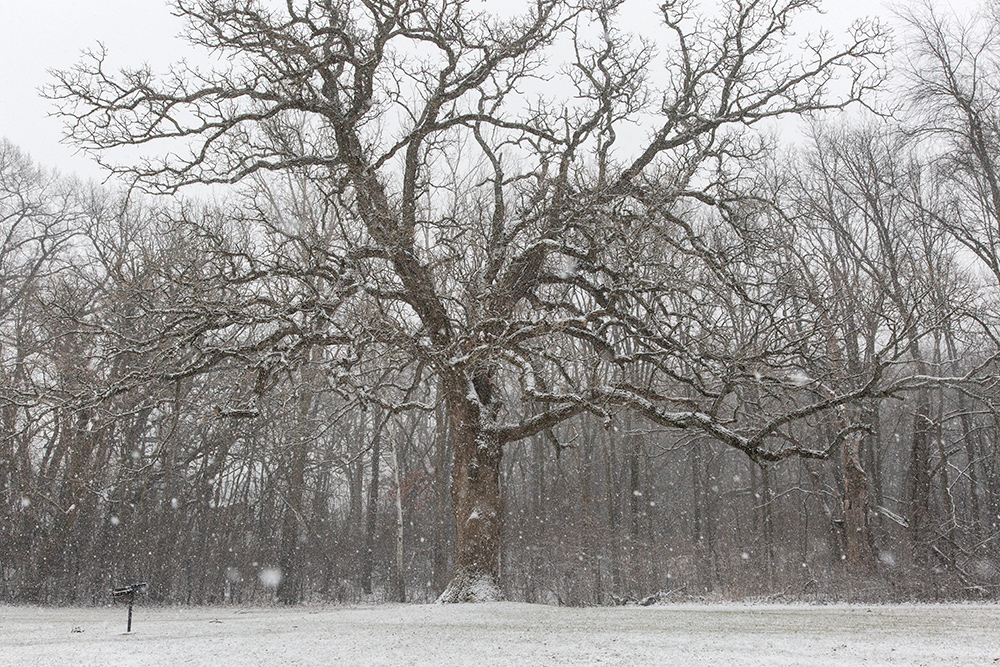
I sweep several inches of snow off my car. Before I reach the county line the snowfall tapers off and dies. I drive on dry pavement, north to Milwaukee.
Eddee Daniel is a board member of Preserve Our Parks and project director for A Wealth of Nature.

